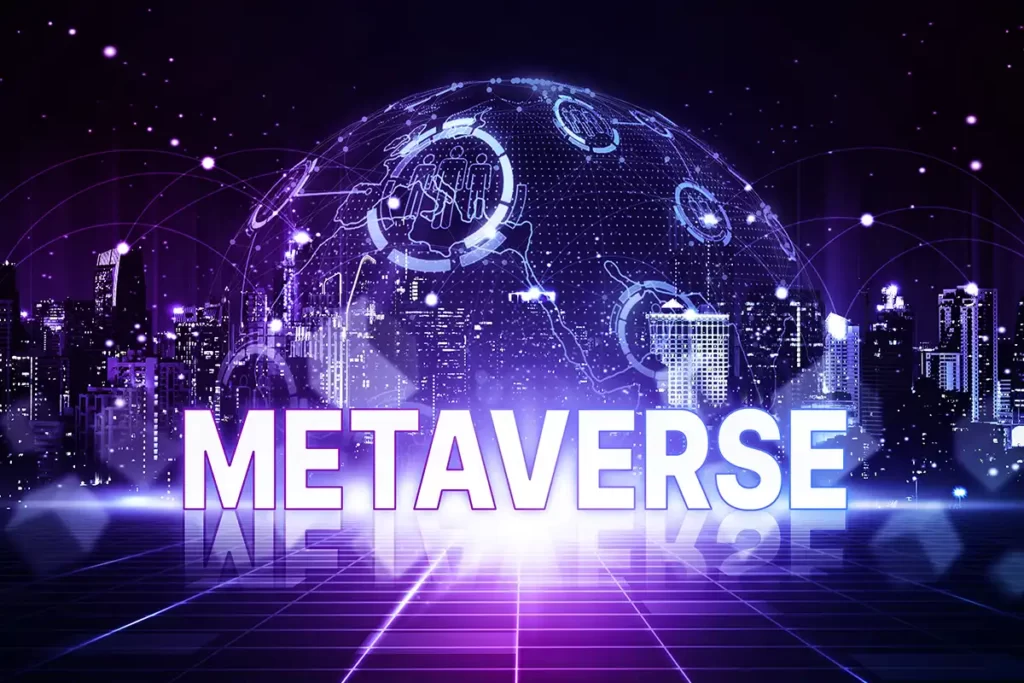
The metaverse is changing how we perceive digital spaces, making the difference between what’s virtual and real is getting smaller. When building these virtual worlds, a lot of developers prefer Three.js. With tools like ‘React Three’ and ‘web3 js’, Three.js plays a big role, reminding us of detailed designs, similar to the seven-layer idea. But the metaverse is more than just good graphics. It brings together skilled coding, new blockchain ideas, and great graphics to make experiences that feel very real. As we explore more of these digital places, picking the right tools and coding languages is very important. And, as Three.js keeps getting better, moving from real to virtual becomes easier every day.
Key Three.js Tools for Metaverse Development
When it comes to creating immersive environments in the metaverse, Three.js stands out. Three.js is what many developers lean on for building parts of the metaverse. It’s user-friendly and works well with many programming languages. If you’re diving into metaverse designs, getting familiar with the main features of Three.js will be quite handy. Whether you’ve been in the game for years or you’re just getting your feet wet, this section will cover the basics you need. Ready? Let’s dive in.
Three.js Renderer
In the vast expanse of the metaverse, the visual experience is pivotal. Think of it not as painting on a canvas but as crafting immersive dimensions where every pixel counts. Three.js, with its robust renderer, stands at the forefront of this.
Canvas and CSS
Unlike a traditional 2D space, the metaverse is a boundless 3D environment. With the Three.js renderer, developers utilize the canvas to its fullest potential, ensuring a perfect blend of 3D objects and optimized canvas size. And yes, with a touch of CSS, it seamlessly fits into the web.
Path Tracing and Ray Tracing
Path tracing and ray tracing are vital to bringing the realism of the physical world into the digital realm. While a path tracer helps simulate how light interacts in a scene, ray tracing ensures that reflections, refractions, and shadows are true to life.
3D Cubes and Post Processing
Building structures requires precision, whether they’re skyscrapers or simple 3D cubes. Three.js renderer, coupled with post-processing effects, ensures that these structures stand tall and resonate with realism.
React Fiber’s Role
Web development and 3D don’t always go hand in hand. But with three fibers, bridging the gap becomes effortless. Integrating 3D objects and animations into web platforms while maintaining high performance is now a reality.
The Three.js renderer is not just about vision; it’s about bringing imagination to life. As developers and designers venture further into the metaverse, tools like these ensure that the bridge between our world and the virtual one remains as real as possible.
Scene Graph
When you’re building a virtual world, it’s not just about the objects you place; it’s about how they relate to each other. That’s where the Scene Graph steps in. Here’s what it brings to the table:
Structure
Imagine having a mind map for every item in your virtual space. The Scene Graph lays out 3D objects in an organized manner, ensuring there’s logic to their placement.
Ease with Visual Programming
It simplifies the process of arranging these objects. Whether placing a plane in the foreground or adjusting a 3D model’s position, the Scene Graph ensures you do it right.
Camera Compatibility
The Scene Graph and camera are buddies. Understanding the view frustum ensures objects are always positioned optimally for the viewer’s experience.
To sum it up, the Scene Graph is like the backbone of your metaverse. It holds everything in place, ensuring the world you create is coherent and captivating.
Camera Controls
Let’s get real. A captivating metaverse is as much about what you see as it is about how you see it. Different camera controls play a vital role in offering unique experiences:
Perspectives Matter
Whether you’re in the first person, experiencing the world through your own eyes, or in the third person, observing from an outer viewpoint, the metaverse should accommodate both. With perspective camera setups, users get a dynamic, immersive experience.
Orbiting the World
With orbit controls, viewers aren’t just static observers. They can smoothly rotate around specific points or objects, allowing them to explore more deeply. Imagine circling a monumental structure, viewing every intricate detail – that’s the power of orbit controls.
Pivoting the Gaze
The camera pivot point feature is more than a technical term. It ensures that the focus remains on a central object or area as the camera rotates. This way, users don’t lose track of their surroundings.
Wide-Angle & Close-Up
Orthographic camera settings allow developers to portray scenes without the depth that perspective cameras provide. It’s like viewing a 3D space in 2D – handy for maps or certain game modes.
Mastering Movement
Transform controls and the view cube are crucial to shift the camera’s position, altering the viewer’s angle and perspective.
In short, controlling the camera means controlling the user’s experience. The better the control, the richer and more diverse the metaverse journey.
Lighting
Good lighting can make or break a scene, especially in the metaverse. It’s not just about visibility; it’s about setting the right mood and atmosphere, making those 3D graphics pop and feel lifelike. So, let’s shed some light on this:
Start with Illumination
Every 3D model in the metaverse begins as a blank slate. You breathe life into these models with proper illumination, ensuring they appear as intended and resonate with the viewer.
Directional Light
Think of this as the metaverse’s version of sunlight. Directional light affects all objects equally, casting shadows and adding depth. Just like the sun sets the scene for our world, directional light sets the tone in digital spaces.
Shadows Matter
While often overlooked, shadows play an integral role in creating a sense of realism. A 3D model can look out of place without its shadow firmly grounded in the digital landscape.
Harnessing JavaScript
What’s great about Three.js is its compatibility with JavaScript. This means developers can use the vast resources of JavaScript libraries to fine-tune, control, and perfect the lighting in their metaverse projects.
In the vast expanse of the metaverse, where endless possibilities beckon, never underestimate the power of effective lighting. It’s the silent storyteller, adding depth, emotion, and a touch of reality to our virtual explorations.
Loaders
In the digital world of the metaverse, building environments isn’t about bricks and mortar but points, animations, and textures. 3D loaders serve as the bridge to bring these elements into the metaverse, ensuring developers can design rich and interactive spaces. Let’s dig into this:
Variety of File Formats
With formats like gltf, glb, and fbx, developers have multiple options to work with. Tools like Blender make creating these models easier, but the true magic lies in smoothly getting them into the metaverse.
React and React Three
Integrating 3D models into web applications? No problem. With React Three, developers can seamlessly incorporate these assets, making the straightforward transition from tools like Rhino or Blender to a web interface.
Point Cloud & 3D Animation
Animations give life to the metaverse. Using loaders, animators can introduce point cloud data and 3D animations to digital spaces, adding motion and energy.
Textures Matter
A 3D model without texture is like a cake without icing. With the gltf loader, adding texture becomes a breeze, ensuring each model looks as natural as possible.
Remember, the metaverse isn’t just about how it looks but also how it feels. By seamlessly importing detailed 3D models and assets, developers ensure users get an immersive and authentic experience.
Conclusion
Wrapping things up, if there’s one thing to keep at the forefront of your mind as you venture into the world of metaverse development, it’s this: Three.js is more than just a tool; it’s a game-changer. From its unparalleled rendering capabilities, the organization ability of its Scene Graph, the complex dance of camera angles and lighting, and the nifty ability to integrate 3D models, there’s a reason why seasoned developers are using it. The digital field of the virtual world is vast and varied, but with tools like these at your disposal, the complexities become a bit simpler. Dive in, explore, and remember in the field of the metaverse. The only limit is your imagination.
Unlock the Metaverse with Threejsdevelopers company! Dive into next-gen domains using Three.js. Your dream universe awaits… Are you ready to shape the future? Contact us now!


